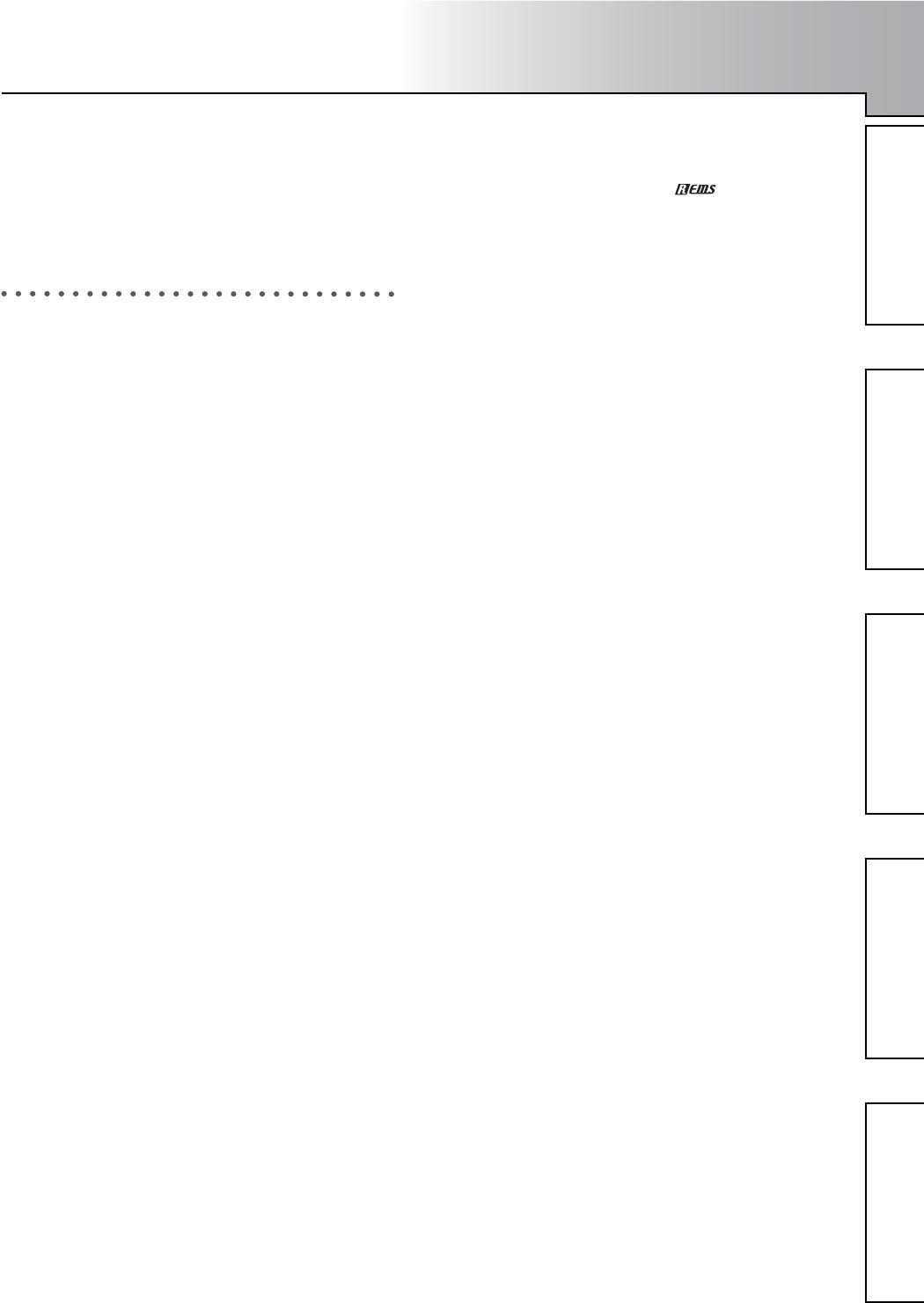
5
Parts and their functionObjects in the display and
their function
Basic operationPreparationsListening to the demo song
Introduction
Thank you for purchasing the
Korg
D1200 Digital Recording
Studio
.
To take full advantage of the D1200’s functions and enjoy
trouble-free use, please read this manual carefully and use
the product as directed. Keep this manual in a safe place for
future reference.
Main features
12-track digital multi-track recorder
In a compact package, the D1200 provides the studio-
quality sound that you expect from Korg, with 24-bit
recording and 16/24-bit uncompressed playback at a
sampling frequency of 44.1 kHz. A maximum of 12
tracks can be played back simultaneously (for 16-bit
data), and up to four tracks can be recorded simultane-
ously. Recording time is a maximum of approximately
186 hours (when recording one track at 16-bit resolu-
tion). Each track provides eight virtual tracks, so you
can record as many as 96 tracks in one song.
XLR connectors with +48 V phantom power, analog
inputs, dedicated guitar input jack, and digital connectors
All analog inputs of the D1200 use high-performance
balanced head amps in order to take full advantage of
the audio quality provided by full-digital processing.
The two XLR input jacks provide +48 V phantom power
and have high-quality mic preamps, allowing condenser
mics to be connected directly. All phone-jack inputs are
balanced TRS types, and also support unbalanced input.
Input sources for a range of levels from mic level to +16
dBu (higher than professional level) can be connected. A
dedicated guitar input jack is also provided. The S/P
DIF digital input contains a sampling rate converter
which automatically converts 48 kHz and 32 kHz
sources to 44.1 kHz, allowing them to be recorded.
Mixer section provides three-band EQ with sweepable
mid-range. 100 scene memories and mixer data transmis-
sion/reception via MIDI.
The 16-channel 4-bus mixer section of the D1200 pro-
vides three-band EQ on each analog input and mixer
channel. High and low EQ are shelving types, and the
mid EQ is an adjustable peaking type with a sweepable
center frequency. Since separate EQ is provided for the
inputs and for the mixer, you won’t need to worry about
recording EQ settings being re-applied to the playback –
a problem that often occurs on MTR units containing
analog mixers.
The faders, EQ, pan, and effect settings of the mixer can
be stored in one of 100 scenes. Scenes can be recalled
automatically as playback time passes, or can be
recalled immediately at any time as general-purpose
settings.
MIDI can be used to transmit and receive mixer data
such as fader and pan, allowing you to use an external
sequencer to perform mixer automation.
Powerful modeling effects with easy icon and knob-based
operation.
The internal effects use Korg’s “ ” modeling tech-
nology to deliver detailed and powerful modeling
sounds. “Modeling mode” lets you use easily under-
standable icon displays and three modeling effect knobs
to select modeling effects for guitar or bass, edit the
parameters, and modify values – just by using icons and
knobs.
As modeling effects, the D1200 provides ten distortion-
type effects for guitar, a vacuum tube simulator, and
eleven types of cabinet from famous amps from around
the world. For bass, choose from three dynamics-type
effects and five types of modulation/spatial effects such
as chorus and delay. For mics, you can use studio simu-
lators with six types of room size and resonance, seven
types of mic simulation ranging from vintage tube mics
to modern studio condenser mics, and three dynamics-
type effects.
When using Modeling mode, the Auto Routing function
lets you record immediately by simply selecting the
desired track.
Three independent effect systems for simultaneous use
The D1200 contains three independent effects system,
all of which use 44-bit internal processing; Insert, Mas-
ter, and Final effects. The settings for each of the insert,
master, and final effects can be saved as one of the 192
user effect programs. Each program can combine up to
five of the 98 available high-quality effect types. Internal
memory contains 128 insert, 32 master, and 32 final
effect programs for a total of 192 preset programs, all
created by professional musicians and studio engineers.
You can also edit a preset program and save your own
settings effect program in one of the 192 user areas.
An external MIDI controller or expression pedal (sepa-
rately sold EXP-2 or XVP-10) can also be used to control
the insert effect in realtime.
Sophisticated editing functionality
The D1200 lets you use the non-destructive editing func-
tions available only on digital recorders to edit your
sound without impairing its pristine quality. You can
use auto or manual punch-in/out recording. Using the
convenient Undo and Redo feature, as many as 99 of the
last recording or editing operations can be cancelled or
recalled. The ten types of track editing operation include
Time Expansion/Compression which lets you match the
tempo of previously-recorded phrases of differing
tempo, and Normalize which boosts under-recorded
tracks to an appropriate level.
You can assign as many as one hundred marker points
to each song, and specify four locate points for easy
access to song locations for editing.


















